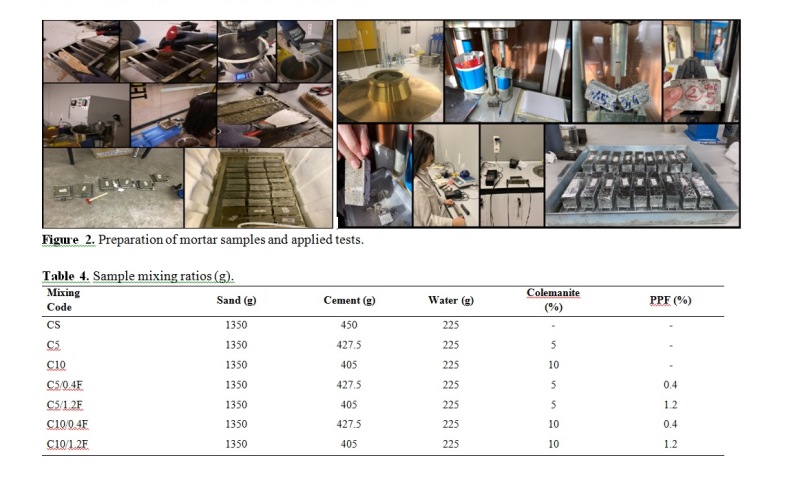<Previous issue | Next issue> | Archive
Volume 13 (2); June 25, 2023
Research Paper
Combined Effect of Colemanite and Polypropylene Fiber on Properties of Cement Mortar
Şahin F, Şimşek B, and Yıldırım AK.
J. Civil Eng. Urban., 13(2): 25-32, 2023; pii:S225204302300004-13
 DOI: https://dx.doi.org/10.54203/jceu.2023.4
DOI: https://dx.doi.org/10.54203/jceu.2023.4
Abstract
Turkey is one of the richest countries in the world in terms of boron mineral reserves. The most commercially used boron mineral in Turkey is colemanite. Although there are some studies on the use of colemanite in concrete, there is still a gap in the literature. In this study, first of all, the use of colemanite in mortar samples was investigated by substituting different ratios of colemanite for cement. In addition, polypropylene fiber was added in different ratios by volume, and an evaluation was made on the combine effect of colemanite and fibers on mortar samples. For this purpose, colemanite was substituted for cement in mortar samples at 5% and 10% cement by weight. Polypropylene fibers were added to the mortars produced with colemanite at a rate of 0.4% and 1.2% by volume. In the study, flow tests, capillarity, water absorption, flexural, compressive, and ultrasonic velocity tests were performed on mortar samples, respectively. According to the test results, it was observed that the flow values of the mortar samples produced with colemanite increased compared to the control mixture. It was found that the addition of 10% colemanite instead of cement negatively affected the capillarity, water absorption, flexural and compressive strength, and UPV values of the mortar specimens. 5% colemanite addition had a lower negative effect. 0.4% polypropylene fiber addition resulted in a positive change in the compressive strength and capillarity values compared to the non-fiber specimens.
Keywords: Colemanite, Polypropylene Fiber, Mortar
[Full text-PDF] [Crossref Metadata] [Export from ePrints]
<Previous issue | Next issue> | Archive
This work is licensed under a Creative Commons Attribution 4.0 International License (CC BY 4.0)![]()
